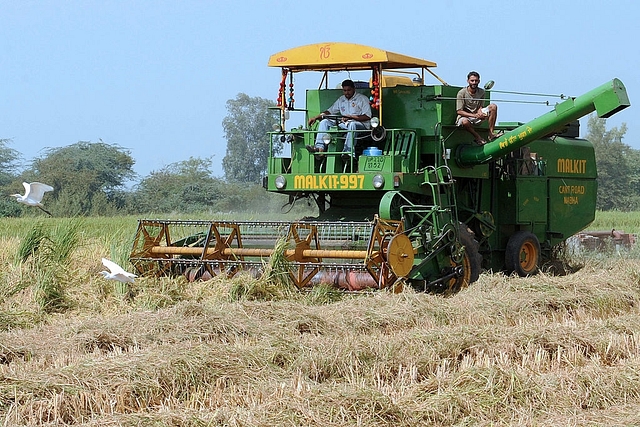
Farm Mechanisation In India- How Madhya Pradesh Is Transforming Its Agriculture Sector Through Custom Hiring Centres
That farm mechanisation helps in increasing production, profitability and productivity is now an established fact. However, in India, the popular belief has been that mechanisation reduces employment opportunity for skilled and unskilled labour. This, coupled with fragmented farm holding and lack of awareness, has resulted in low farm mechanisation in the country.
The situation is dire. With over 55% of the country’s manual labour involved in agriculture, the sector only contributes 14% to the GDP. The average size of farm holdings in the country is declining, falling from 2.28 ha in 1970-71 to 1.16 ha in 2010-11. Compared to this, the average size of farms in the United States was 177 ha in 2013. With smaller farms, the purchasing capacity of the farmers falls significantly and owning costly machines no longer remains a viable option.
A report published by the National Bank for Agriculture and Rural Development breaks the myth. According to the report, mechanisation in India, contrary to popular belief, has generated employment for rural youth. Punjab, the report states, employs 7.0 lakh labourers from adjoining states, out of which 3.5 lakh are employed on a regular basis and remaining during the main cropping season. Total farm power availability has increased from 0.25 kW/ha in 1951 with animate power contributing 97.4 percent to 1.15 kW/ha in 1997 with animate sources contributing only 22.7 percent, mechanical sources 43.5 percent and electrical sources 33.8 percent.
While Punjab has seen significant success, farmers in different parts of India still remain bogged down with traditional farming methods. Unavailability of modern equipment still remains an issue. In an attempt to make costly farm equipment available to small farmers in Madhya Pradesh, the state government has been helping rural youth in setting up equipment hiring centres. The initiative is in line with Prime Minister Narendra Modi’s ‘per drop, more crop’ initiative for increasing productivity.
Here is how the hiring centres help:
- Centres buy equipment with assistance from the state government and make it available for small farmers in their area.
- For handling accounts and equipment, the centres hire youth from the village. This provides employment opportunity to local youth.
- Availability of machines reduces the farmer’s dependence on traditional farming practices and manual labour.
- Mechanisation lowers the cost of cultivation and increases farm productivity. These factors, in turn, increase the farmer’s profit.
Rural youth with an undergraduate degree can apply for grants under the scheme. While a total investment of Rs 25 lakh is what it takes, the applicant is only required to place margin money of Rs 5 lakh. The government subsidises 40% of the total cost, to a maximum amount of 10 lakh, and bank loans are provided to cover the remaining cost.
Centres are designed and developed to cover around 300 farmers in a radius of 10 kilometres. The government limits the number of centres to keep the venture profitable. Over 1,205 farmers are currently running such centres in Madhya Pradesh and similar models are being tried and tested in other states including Tamil Nadu, Odisha and Uttar Pradesh. A recent report published in the Livemint shares various success stories and can be read here.
Also Read: How Shivraj Singh Chouhan Pulled Out The ‘M’ From BIMARU